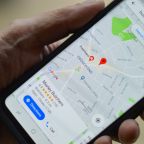
From Planning to Performance: 8 Steps to Inclusive Presentation Delivery
A varied professional environment requires presentations that everyone can enjoy and learn from. Our post provides eight practical ways to make it more inclusive. If you’re looking to create yours. A Presentation design agency may help you create an engaging piece for all attendees, regardless of background, abilities, or learning styles. These inclusive behaviors will improve your communication and create a respectful, inclusive environment.
Know Your Audience
To give an inclusive presentation, first know your audience. This requires studying your audience's age, culture, career, and any impairments. Understanding these factors lets you personalise your piece to their needs and experiences.
Audience Demographics Research
Start with audience demographics. This can be done with pre-event surveys, registration data, or informal interactions. Knowing your audience helps you tailor it to their interests.
Customising Content for Different Needs
After understanding your audience's demographics, tailor your material to them. Use inclusive language and avoid technical jargon unless the group knows it. Consider your audience's cultural and educational backgrounds to avoid alienating them with content or delivery.
Knowing your audience helps you give a presentation that is informed and entertaining. This first stage establishes the inclusion of your presenting approach.
Content Planning
A piece that is accessible and entertaining for all audience members requires good content planning. This process entails organising it for clarity, impact, and accessibility.
Presentation Structure for Clarity and Impact
Your content should be organised logically to build on previous knowledge. Begin with an introduction that sets the stage, then present the primary information, and close with a summary that reinforces the important points. This straightforward structure makes it easy for all audience members, especially those who require extra time to learn.
Making Content Accessible
Making your information accessible goes beyond words. Speak clearly and simply to individuals of all backgrounds and skill levels. Summarise complicated ideas and provide handouts or visual aids to supplement the spoken content. Make sure your documents are screen reader-friendly and include different formats for disabled audience members.
Planning your material with these factors will make it more inclusive and maximise event benefits for all attendees.
Making Slides Accessible
Presentation slides' visual style affects message accessibility and efficacy. Find out how to make slides that everyone can comprehend.
Visually Accessible Slide Design Tips
To help visually impaired people, use high contrast text and backdrop colours. Black lettering on white or vice versa is easiest to read.
Simple Designs: Avoid distracting or confusing layouts. Use white space around text and images in a clean style
Large Fonts: Use large fonts for distance readability. Headings should use larger fonts than body text, which should be 24 points.
Selecting Fonts and Colours
Colour Schemes: Consider colour blindness while choosing slide colours. Avoid troublesome pairings like green and red.
Readable Fonts: Choose readable typefaces. Sans-serif typefaces like Arial and Helvetica are suggested for screen readability.
These features help you develop slides that are appealing and accessible to everyone in your audience, including those with visual needs.
Inclusive Language and Delivery
Using inclusive language and careful delivery ensures all audience members feel valued and engaged. How to do this when delivering it.
Language Matters in Inclusivity
Avoid Jargon: Use plain, unambiguous language that all audience members can understand. If not generally understood or clarified in the presentation, avoid technical or industry-specific jargon.
Use Gender-Neutral Language: Use "they" instead of "he/she" and "team" instead of "guys" to neutralise gender-specific phrases.
Cultural Awareness: Cultural variations can effect how your message is received. Avoid idioms and words that may lose meaning between cultures.
Clear and Respectful Communication Methods
Clear, Moderate Speech: Keep your speaking speed moderate to allow everyone to digest the information, particularly those who process auditory information slowly.
Pause to emphasise: Pause briefly after significant points to let your listeners comprehend them. This aids comprehension and emphasises the point.
Restate Key Points: Reiterate essential points during the presentation to help remember them.
Inclusive language and thoughtful delivery make it more accessible and make attendees feel valued.
Using Different Learning Styles
Recognising and engaging audience learning types helps improve inclusivity and effectiveness. How to accommodate different learning styles:
Recognising Audience Learning Styles
Visual learners learn best by seeing. Use diagrams, infographics, and films to reinforce your claims.
Auditory learners enjoy listening. Maintain clear verbal communication and use talks or recordings wherever available.
Kinesthetic learners learn by doing and touching. While difficult in a conventional presenting context, include audience-participation activities or demonstrations.
Engaging Everyone with Your Delivery
Incorporate many teaching strategies into your piece to accommodate diverse learning types. Use visuals, storytelling, and interactivity.
Interactive Elements: Polls, question periods, and small group conversations make piece more interactive for engaged learners.
Notes and Takeaways: Give participants specific handouts to use during and after the presentation. This enables all learners learn and review at their own speed.
Accepting these varied learning styles will make your presentation more inclusive, memorable, and impactful for everyone.
Answering Questions Inclusively
Facilitating an inclusive Q&A session keeps audience members engaged and makes them feel heard and respected. Make your Q&A sessions more inclusive with these tips:
Tips for Inclusive Q&A
Set Clear Guidelines: At the start of the Q&A, set clear expectations for question handling. Encourage polite, succinct questions to maximise participation.
Ask questions with an audience microphone if accessible. This elevates their voice and ensures everyone in the room can hear the inquiry.
Repeat queries: Always repeat audience questions before answering. If some attendees didn't hear the question, this helps everyone grasp it.
Encourage All Attendee Participation
Ask Questions from Around the Room: Encourage questions from the entire crowd. This fosters involvement from less confident or distant participants.
Offer Other Questioning Methods: Allow audiences to submit written or digital questions during the session. Shy people or those who avoid public speaking may benefit from this.
These tactics will make your Q&A sessions more productive and inclusive, allowing everyone to participate.
Use assistive technology
Assistive technology can make presentations more accessible and give everyone a chance to participate. Integrate these technologies effectively:
Presentation Assistive Technology Overview
Hearing Loops and FM Systems: Hearing loops and FM systems help the hearing impaired. Make sure these devices work before your presentation.
Visual Aids: Screen magnifiers and text-to-speech software can aid visually impaired audience members follow your slides and information.
For those who are deaf or hard of hearing and for those who learn better by reading, real-time captioning can be quite helpful.
Integrating These Technologies Effectively
Be sure to test these technologies before the presentation to avoid technical issues that could affect accessibility.
Training and Awareness: Learn how to use these tools and support attendees if needed.
Signage & Directions: Provide clear signage and instructions on using assistive technology at your event. All attendees know what resources are available and how to use them.
Integration of assistive technologies into your presentation can greatly increase its inclusivity and accessibility, allowing all audience members to fully participate with your message.
Feedback Collection and Use
Continuous progress requires feedback, especially for inclusive presentations. Learn how to collect and use feedback to improve future engagement and accessibility.
Important Feedback for Inclusive Presentations
Get audience input to assess your presentation's accessibility. This information helps discover areas for improvement and reinforces successes.
Feedback Collection and Implementation Methods
Audience input: Use post-surveys or web polls to get audience input. Ask specific questions regarding your presentation's inclusion and accessibility for details.
Extended comments: Ask guests for comments via email or a feedback form after the event. This gives them time to contemplate and remark more thoroughly.
Act on Feedback: Critically analyse feedback to find common themes or difficulties. This data can help you improve your content, and assistive technology.
Having a thorough feedback system helps you understand your audience's demands and shows a commitment to diversity and constant growth.
Conclusion
Today's globalised society requires presentations that reach and engage a diverse audience. This article's eight steps from audience understanding and content planning to assistive technology use and feedback provide a complete guide to inclusive. Presenters can create an inclusive and respectful environment by using these techniques to make their message accessible. For continuous improvement and adaptation, input must be sought and integrated. Take these measures to improve your abilities and promote inclusion in your professional community.

















